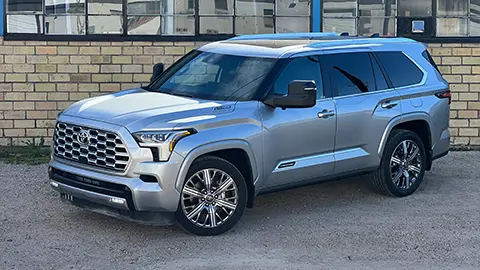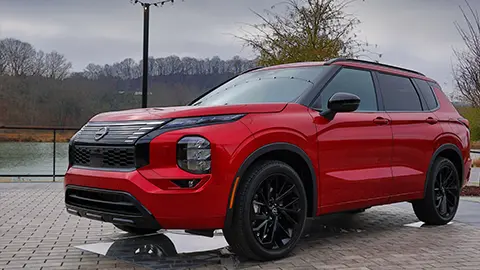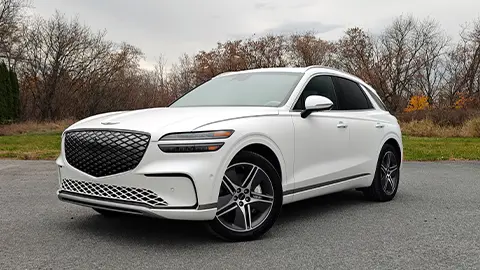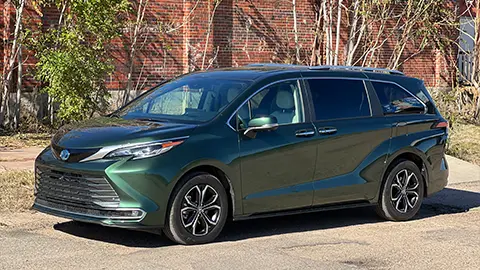Fast Facts | 2025 Polestar 4
⚡ Powertrains: Single-motor RWD (272 hp) or Dual-motor AWD (544 hp/506 lb-ft)
⏱️ 0–60 mph : 3.7 seconds (dual-motor)
🛣️ Range (EPA Estimated): Up to ~310 miles single-motor; ~280 miles dual-motor
🔌 Charging: CCS1 DC fast charging up to 200 kW; 10–80% ≈ 30 minutes
💵 Pricing (US MSRP): $57,800 single-motor; $64,300 dual-motor; ~$78,100 as driven
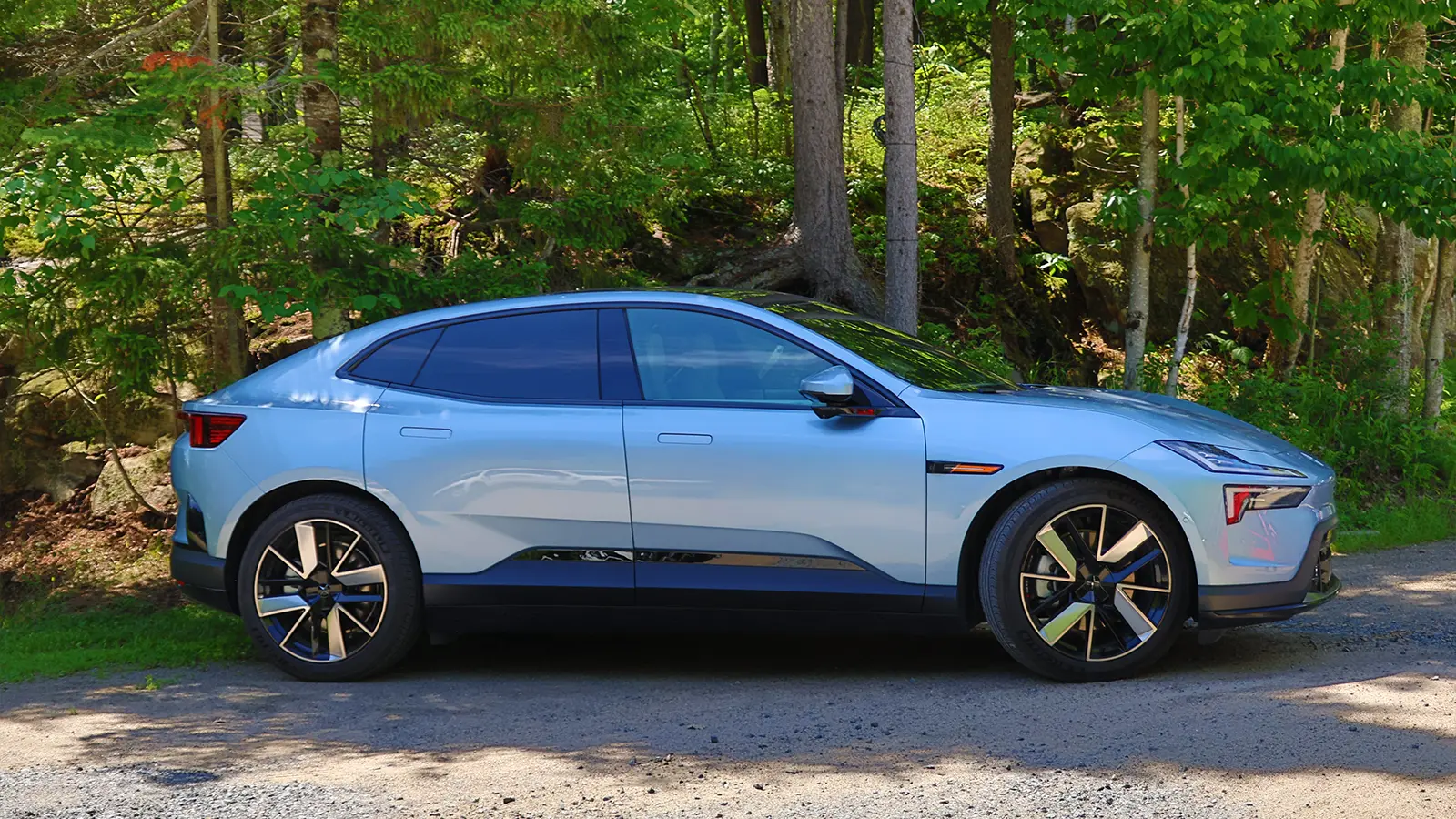

A Sleek New Expression of Polestar Performance
After starting as a company that built racing versions of Volvo cars in the mid-1990s, Polestar transitioned to tuning the Swedish brand’s road cars before eventually being acquired outright by Volvo. Then in 2017, Volvo and its owner, China’s Geely Group, decided to spin out Polestar as a stand-alone brand for electric performance vehicles. The growth of the Polestar brand has been slow so far, partly due to a very limited lineup and few dealers. But that’s starting to change. This fall, the new Polestar 4 (which I’ll call the PS4) arrives in North America, and I got to drive it.
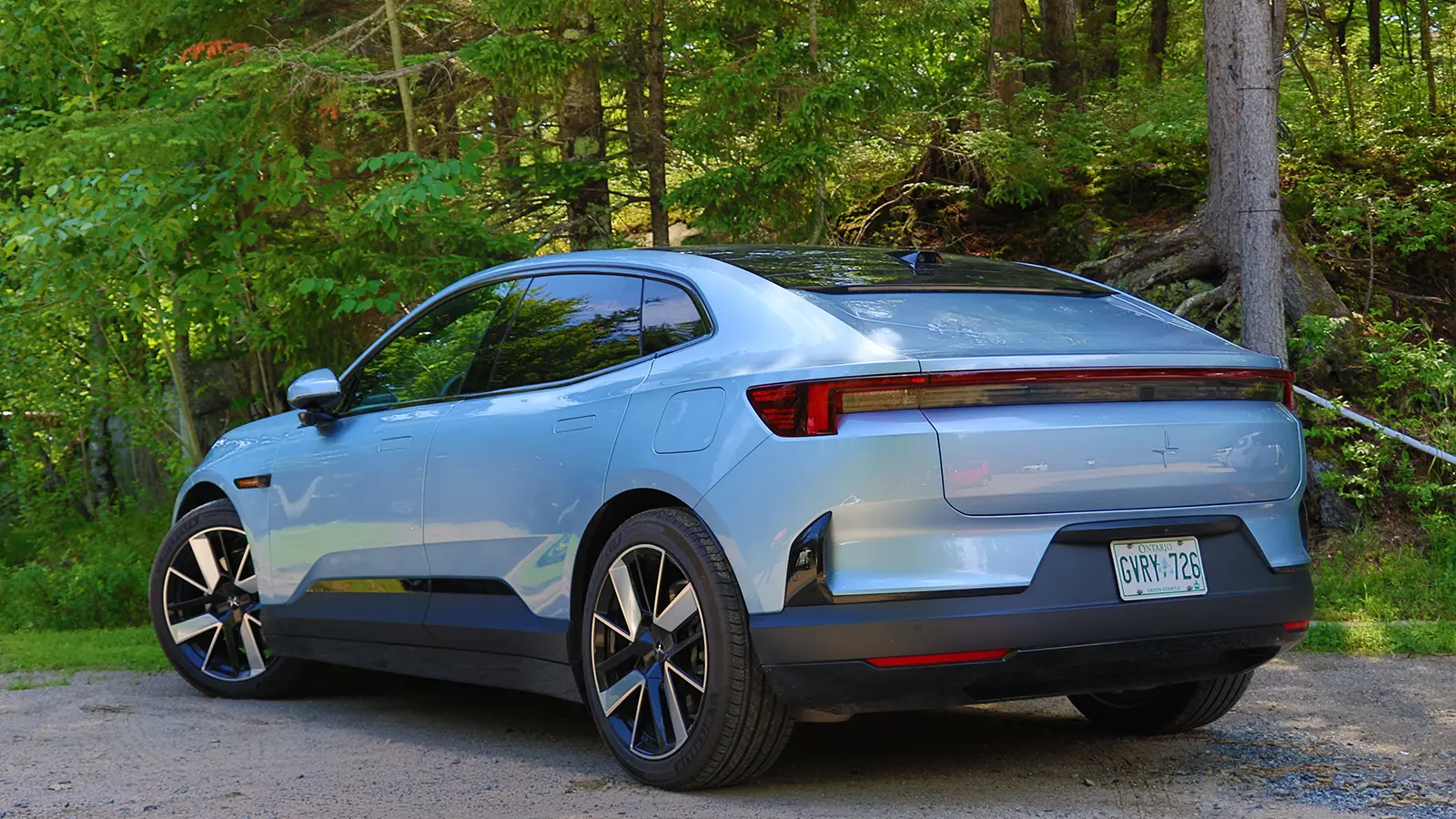
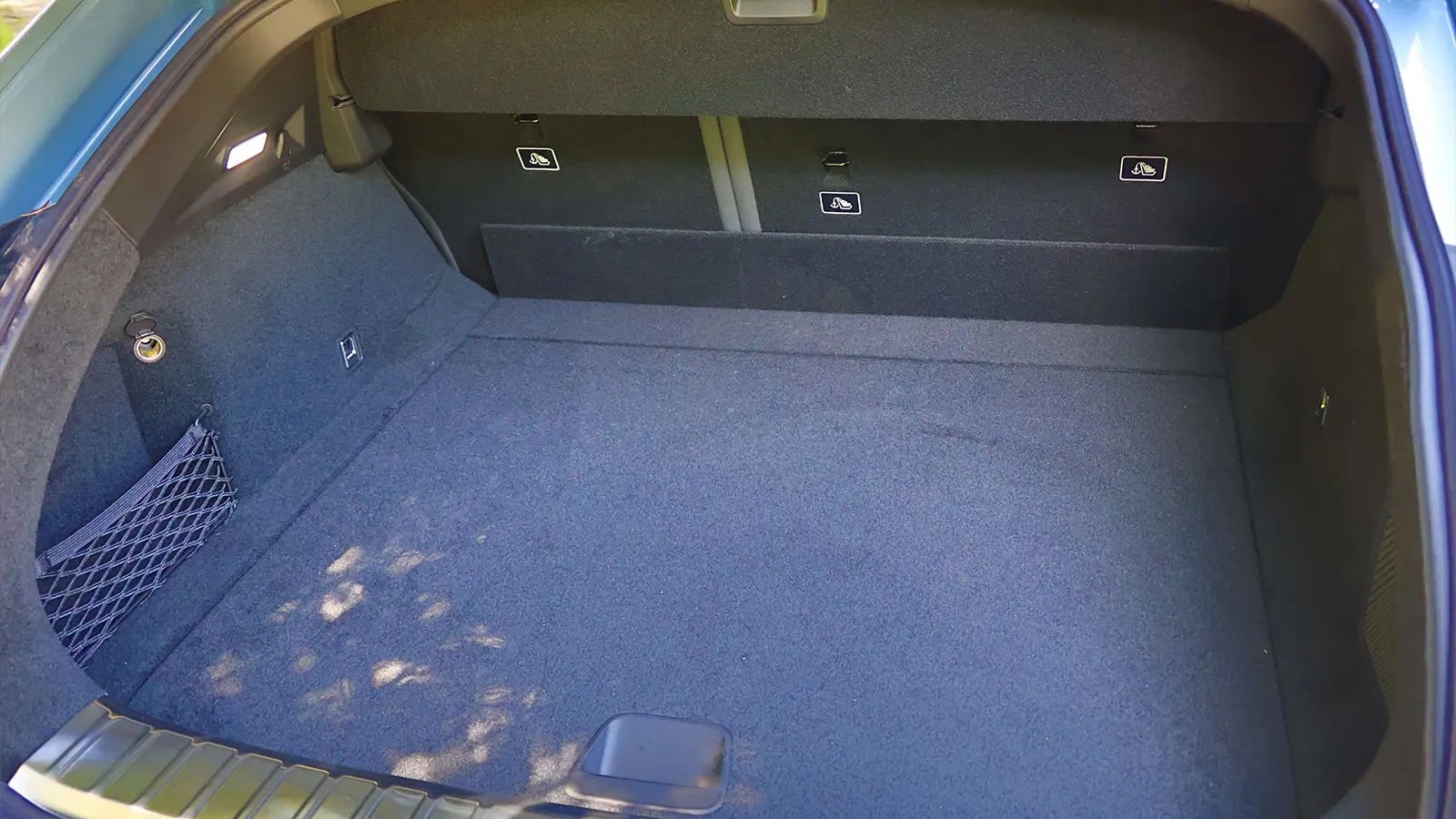
When Is an SUV Not an SUV?
Polestar classifies the PS4 as an SUV coupe, but this is absolutely a car. The roofline is 6.6 inches lower than a Toyota RAV4's, and ground clearance is only 6.5 inches. To me, this is a car, not an SUV. Now that we’ve settled that, let’s take a closer look.
The PS4 is a five-door hatchback that's slightly larger than a BMW i4 and smaller than the Polestar 3. Unlike the more traditional wagon profile of the PS3, this model has a sloping, fastback profile that's sleeker than anything we’ve seen from Volvo, even compared to the C40.
One aspect still retains some Volvo DNA: the hammer like front lights, which Polestar has tweaked by adding a sliver of body-color material between the two halves, calling it “Dual Blade.”
The rest of the shape is a crisply styled, modern coupe that is neither especially distinctive nor at all offensive. From the rear, there's one particularly notable element — the tailgate has no glass. I don’t actually consider this a problem since rear visibility on many modern cars tends to be extremely limited anyway.
Curious how charging speeds and networks shape real-world ownership? The Fastest-Charging Electric Cars
Like most premium brands, Polestar’s designers have largely eschewed bold colors. The two alternatives to a spectrum of white to black are a sharp-looking matte gold and a silver-blue shade they call Electron. The car I drove had this latter hue, and, fortunately, in the sun, it looks more blue than it does in the online configurator.
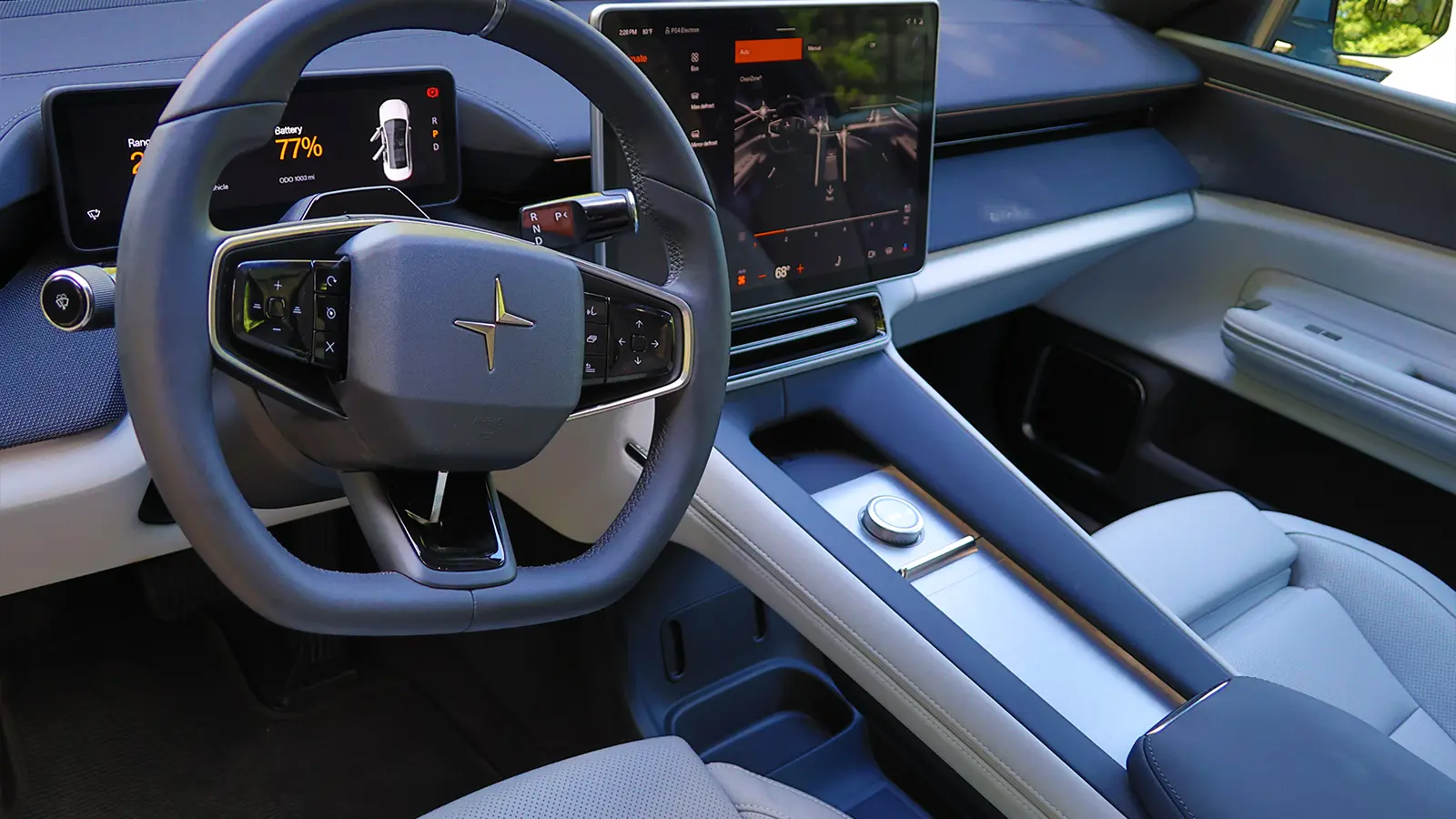

The Driving Environment
The overall layout of the cockpit is attractive and works well. One element I was happy to see was on the driver’s door armrest — four discreet window switches. The PS3 uses just two switches and a third to select between front and rear, which is annoying.
Polestar includes a 10.2-inch display directly in front of the driver for key information, including from the built-in Google Maps, and a 14.7-inch head-up display. There's even a Snow mode that switches the main color in the head-up display from white to yellow for more visibility in winter driving conditions.
The 15.4-inch infotainment screen has almost all of the settings, including the climate control, in a permanent strip across the bottom. There are haptic buttons on the steering wheel for volume, fast-forward, reverse, controlling the driver assist, and adjusting the mirrors and steering wheel. Secondary adjustments are in the touchscreen.
Sadly, Polestar copied one terrible feature from other EV makers: the vent control. While the vents for the front seats are visible, there are no tabs to adjust air flow direction. For that, you have to tap the screen and drag arrows around, which is just a stupid solution when you're driving.
The seats are extremely comfortable and supportive, including adjustable support for those with longer thighs. The seats have heating, but no ventilation unless you get the Plus pack. Polestar uses an attractive mix of materials, including standard synthetic leather or optional Nappa leather. Parts of the doors and dashboard are covered in an attractive fabric that Polestar developed with the Swedish School of Textiles.
There’s also a nice mix of aluminum and a neoprene-like material on the center console. However, with the sun shining down through the windshield, there was a noticeable reflection off the area around the central volume knob right into my eyes. The electrochromic glass roof can switch from transparent to translucent, but the sun was coming in ahead of this panel, so it didn’t help.
The digital mirror works well to provide excellent rear visibility, and when the turn signal is activated, it even shifts the field of view in that direction for a better view. The rear seats were also roomy and could be reclined, in part thanks to the absence of the rear window.
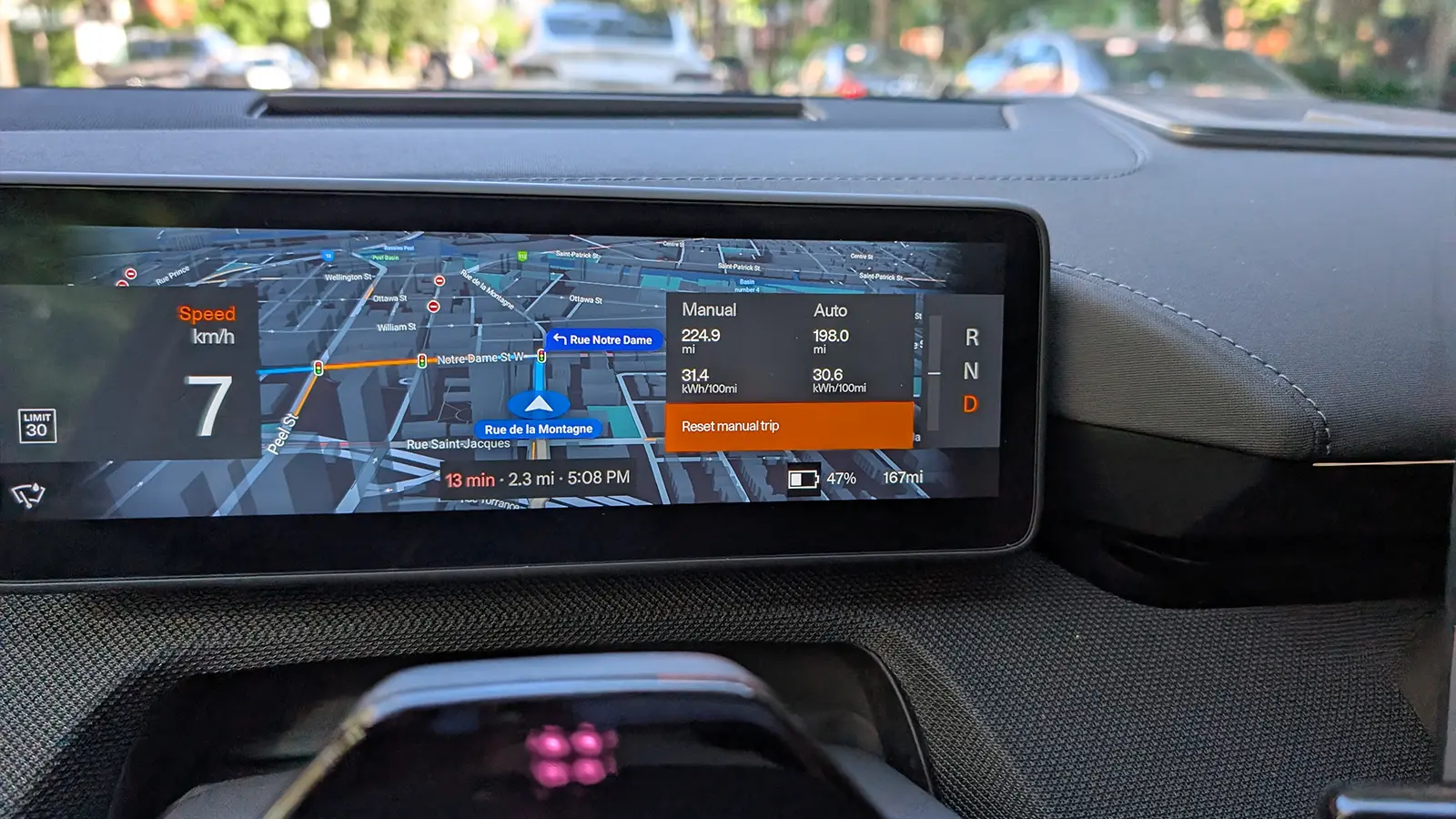

To the Mountains
My drive route took me from the old port area of Montreal northwest to Mont-Tremblant over a mix of urban congestion, highways, and curving mountain roads. The PS4 is available with a choice of one or two 272-horsepower electric motors. The single motor is installed at the rear axle, while the dual adds one to the front for a total of 544 horsepower and 506 pound-feet of torque. I got to sample the dual motor, which Polestar claims gets to 60 mph in 3.7 seconds. I find that completely believable.
While not small, the PS4's size is still modest enough to maneuver in the dense Montreal traffic without difficulty, and the lack of a rear window never posed a problem. The PS4 has a multi-link front suspension and integral link rear with steel coil springs all around. The single motor units have passive dampers, while the dual motor vehicle I drove uses adaptive dampers. While not exactly plush, the ride quality was adequate to absorb Montreal's frost heaves, potholes, and old cobblestone streets without being punishing.
On the highway, I took advantage of the Pilot Assist system that combines adaptive cruise control with hands-on lane centering. This is basically the same system Volvo has had for many years, although it has gotten better over time and does a decent job of keeping the car centered in the lane. It also adds lane-change assist when you tap the turn signal stalk, but it’s fairly conservative about making sure there is a big enough gap. The car is also equipped with the hardware for a hands-free assist system, which has been available to customers in China since it went on sale last year, but it needs more testing before launching in the U.S.
Once we got on the two-lane roads in the mountains, the PS4 really came alive. With all that power, you can accelerate quickly out of corners, and it had no problem getting past a slow-moving BMW. The low center of gravity keeps body roll to a minimum, and the combination of the suspension and all-wheel drive provides very neutral handling. The only issue dynamically was the steering, which is precise and nicely weighted but somewhat lacking in feedback.
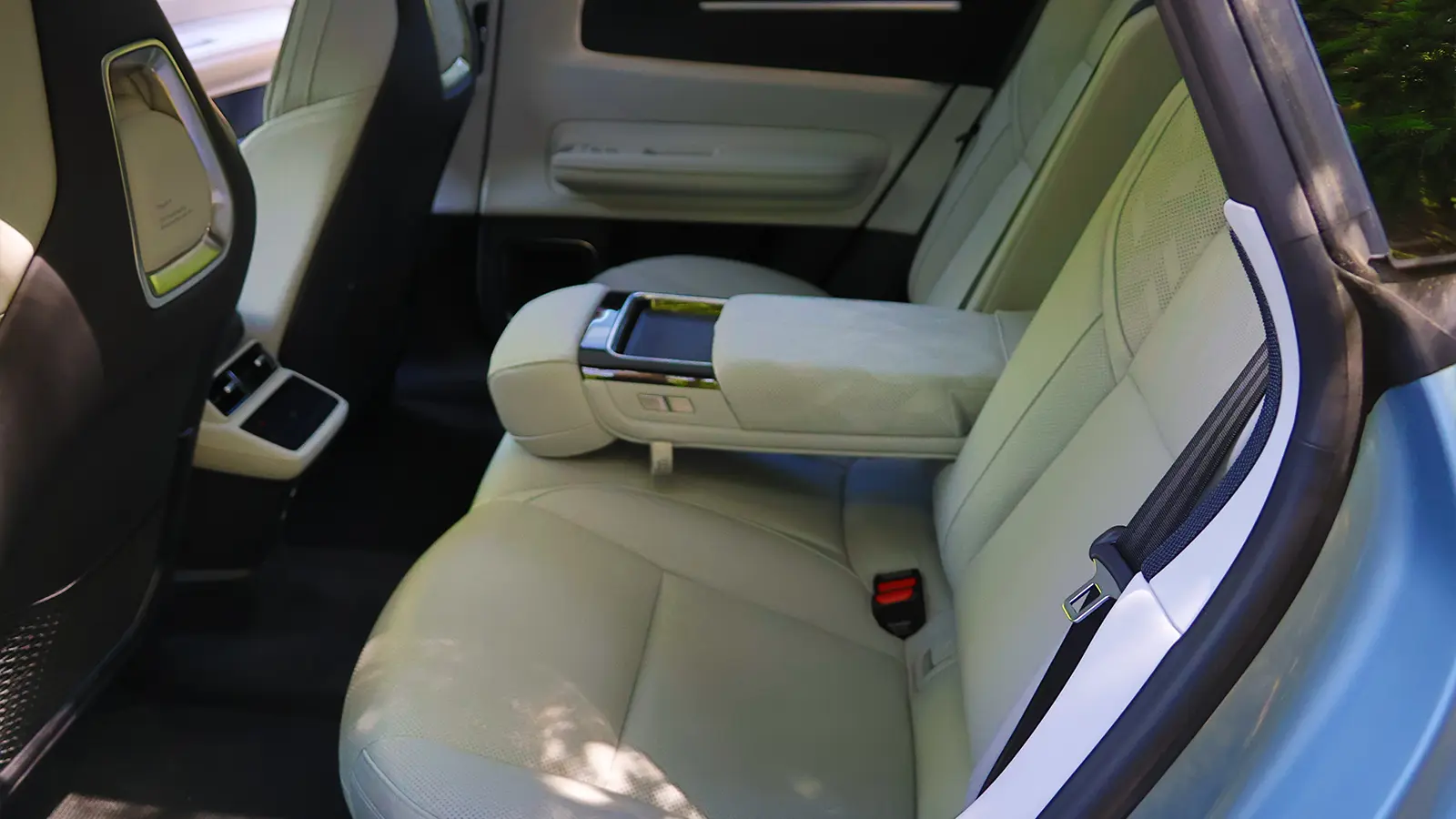

The Bottom Line
The Polestar 4 has a 100-kilowatt-hour battery pack and has been rated at 310 miles of range on a charge with a single motor or 280 miles with two motors. It has a CCS1 charging port rather than the NACS, but it'll charge at up to 200 kilowatts and can go from 10 to 80 percent in about 30 minutes.
The single-motor PS4 starts at an MSRP of $57,800, including $1,400 destination charge, while the dual-motor costs $64,300. The example I drove with the Plus pack, electrochromic roof, and 21-inch sport wheels came to a grand total of $78,100 MSRP.
That’s quite a bit more than a Tesla Model Y Performance or a Lexus RZ, but it’s in the range of a BMW i4. I prefer the Polestar design to the BMW, but the digital vents might just be a deal killer for me. Many designers see it as a trivial element in the pursuit of design minimalism, but it’s one of those little details that has an outsized impact.
* All mileage is EPA estimated.
🚗 Scandinavian Speed — More EV Reviews
- 2025 Polestar 3 Review
The larger Polestar SUV delivers range, refinement, and a tech-forward interior with cohesive dynamics.
Read More ➜ - 2024 Polestar 2 Road Test
Polestar’s compact fastback EV balances pace, range, and value with a cleaner, sharper driving feel.
Read More ➜ - 2025 Audi Q6 e-tron Review
Audi’s newest luxury electric SUV sets a new standard for refinement, technology, and driving confidence.
Read More ➜







